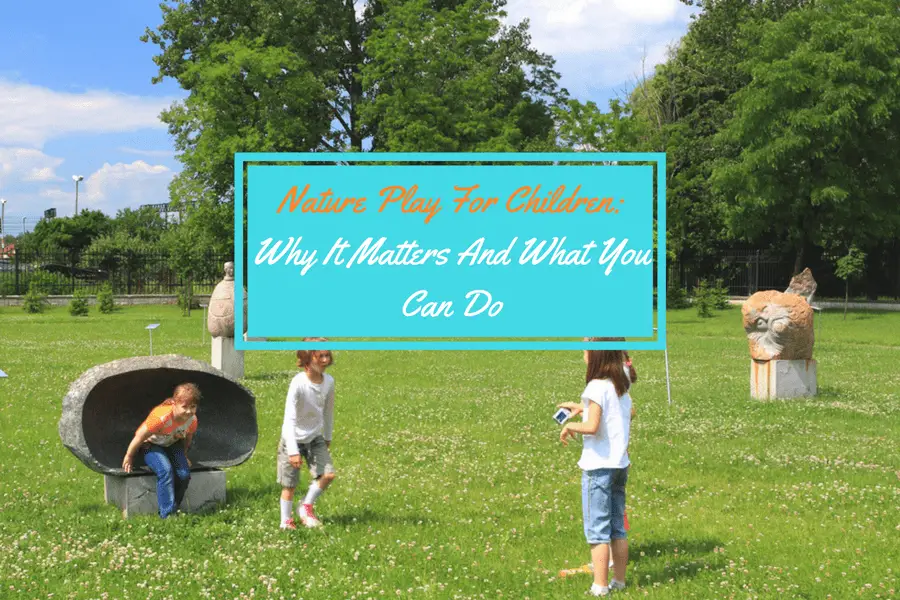Playing with rocks and dirt, climbing trees, running through fields, riding bikes – these are some of the memories children love the most. The freedom to explore and interact with nature typically results in lasting memories. Creative play tends to help children develop in a natural, healthy way.
What Is Happening To Nature Play
In recent years, the average time that a child spends outdoors has reduced massively. Less than 10% of children currently play outside in natural spaces such as woodland. Incredibly, around 3/4 of children spend less time outdoors than prison inmates.
As screen time has gone up, time spent in nature has gone down. According to the Einstein Medical Centre Philadelphia, even by age one, 14% of children are already using electronic devices for an hour a day. This goes up to 26% by the age of two, to 38% by age four, and increases with age.
Louv (2005) says when children become more engrossed in technology, they become less connected to their natural environment. Children become more disconnected from peers and society as they become addicted to technology.
Benefits of Nature Play
However, studies have consistently highlighted the benefits of children spending time in nature for childhood development. Environmental health science shows a positive innate bond between human well-being and nature, and furthermore, childhood engagement with nature is the key to cementing this. In a survey by the University of British Columbia, it was found that 87% of adults who spent time in nature as children were more environmentally aware.
The University of Michigan recently carried out a study in which they determined that short term memory can be improved by 20% after a short walk in nature. The Council of Learning Outside of the Classroom also recently found that outdoor activity helps with the development of a healthy and active lifestyle, as well as developing problem-solving skills and creativity.
A study from the national Wildlife federation showed the following benefits from nature play:
- Improved classroom behavior;
- Increased student motivation and enthusiasm to learn;
- Enhanced performance in maths, science, reading and social studies;
- Reduced Attention Deficit Hyperactivity Disorder (ADHD);
- Higher scores on standardised tests
- Better performance from under-resourced, low-income students
Risks of Minimal Outdoor Play
Several studies have shown the detrimental effects of children not spending enough time outside. Children’s roaming status, the amount of independence or responsibility given by parents to wander away from their home has decreased by 90% in the last thirty years.
Concerns about the safety of children outdoors has led to parents preferring their children playing indoors, which in turn means children tend to play with gaming consoles, rather than take an interest in the environment and nature. A lack of outdoor play has even been linked to the development of mental and physical disorders.
How To Promote Outdoor Play
There are a number of activities in which you can encourage your child to undertake in nature. Our infographic covers three ideas, what you’ll need to carry out each and the process in which to follow. Firstly, you can encourage your child to build a fairy garden. All you will need is a container, small paintings, moss, potting soil and some accessories. Firstly, prepare the soil by turning it over, and add the plants and accessories. Make sure to care for the garden by watering it regularly.
You can also use a checklist to look for tracks left by animals outside by looking for footprints. Searching for tracks will help your child feel more excited about being out in nature and it will also help them build their knowledge of different animals and the countryside. We’ve also included a Nature Bingo Walk card which you can use when you spot animals such as rabbits, swans and foxes when your exploring the environment. All you’ll need are some binoculars. And outside there's no need for bug management.
There are several organizations that provide places to visit and activities to try. In the UK the World Wetland Trust has numerous child friendly locations where the whole family can have fun and explore nature. The National Trust and The Wild Network offer seasonal games that promote creativity and outdoor play. In the US many cities have adopted “green infrastructure” as part of urban planning. City, county, regional parks, as well as state, federal grounds, and school grounds or childcare centers offer areas for play. It really doesn't have to be fancy- your backyard is a great place to start.
Where do you like to take your children to explore nature?




Pingback: Toddler And Kid Trampolines To Wear Children Out - Full Time Baby